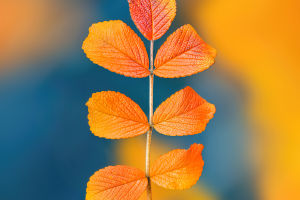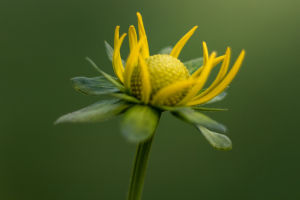Indoor plants not only beautify a space but also improve air quality, adding a touch of green to your living environment. When choosing plants suitable for indoor cultivation, it’s important to consider their light requirements, humidity needs, and maintenance difficulty.
Here are some recommended indoor plants and their care tips to help you find the right green companion for your space.
1. English Ivy
English Ivy is a highly popular indoor plant due to its flexible climbing nature. It effectively absorbs harmful substances such as formaldehyde and benzene from the air, improving indoor air quality. It has low light requirements and can grow well in low-light conditions, but it thrives best in bright, indirect light.
When caring for English Ivy, keep the soil slightly moist but avoid waterlogging. Watering frequency should be reduced in winter. It generally thrives in normal indoor humidity, but in dry winter conditions, occasional misting can help increase humidity.
2. Monstera Deliciosa
Monstera Deliciosa is admired for its unique leaf shape. Its large, decorative leaves make it a highlight in indoor spaces. It grows well in low light conditions but performs best in bright, indirect light.
When caring for Monstera, allow the top layer of soil to dry out between waterings, avoiding waterlogging while keeping the soil slightly moist. It prefers higher humidity, especially in dry winter conditions, so increasing humidity may be beneficial.
3. Sansevieria
Sansevieria is an extremely drought-tolerant indoor plant. Its resilience and low maintenance needs make it an ideal choice for busy individuals. It requires minimal light and can grow in low-light environments while tolerating short periods of drought.
When caring for Sansevieria, water it sparingly and keep the soil dry to avoid waterlogging. It has low humidity requirements and generally thrives in normal indoor humidity.
4. Aloe Vera
Aloe Vera is a succulent plant known for its medicinal value and air-purifying properties. Its thick leaves contain a gel that helps it survive in dry conditions.
Aloe Vera is easy to care for, making it suitable for busy households. It needs ample sunlight, so placing it in a sunny spot is ideal. It prefers dry conditions, so water sparingly and keep the soil dry. Aloe Vera has low humidity requirements and usually does well in typical indoor environments.
5. Spider Plant
Spider Plant is a common indoor plant valued for its strong air-purifying abilities and rapid growth. Its unique, arching leaves add a natural touch to indoor environments.
Spider Plant is adaptable, thriving in bright, indirect light but also able to tolerate lower light conditions. Keep the soil slightly moist, avoiding overwatering. Reduce watering frequency in winter. It generally does well in standard indoor humidity, but additional humidity can be beneficial in dry conditions.
6. Pothos
Pothos is an extremely easy-to-care-for indoor plant that grows well under various lighting conditions. Its trailing vines make it suitable for hanging or placing in high spots and it is also an effective air purifier.
Pothos prefers indirect light or low light conditions. Keep the soil moist but avoid waterlogging, typically watering once a week. Pothos has low humidity requirements and thrives in regular indoor humidity.
Choosing the right indoor plants can enhance your living quality and bring vitality to your home space. These plants not only offer aesthetic appeal but also serve air-purifying functions and are relatively low-maintenance.
By understanding each plant’s light, watering, and humidity needs, you can better care for these green companions and help them thrive in your living environment. Whether you are a plant enthusiast or a novice, these plants are excellent choices to bring life and energy to your indoor space.


